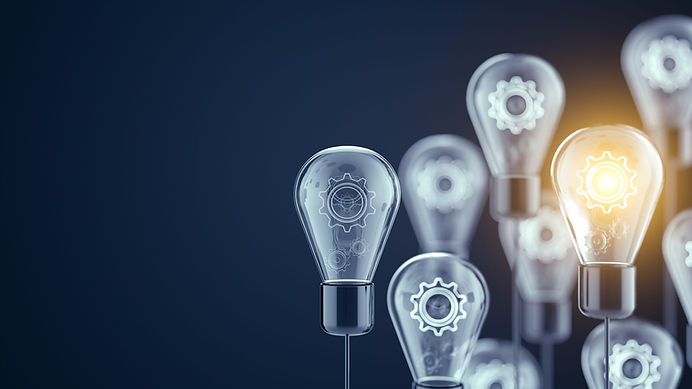
What is Affiliate Marketing?
LEARN WHAT AFFILIATE MARKETING IS, HOW IT WORKS, AND HOW TO GROW A
HIGH-ROI PROGRAM.
What You Will Learn in This Guide
Whether you're new to affiliate marketing or looking to scale an existing program, this guide covers everything you need to understand how affiliate marketing works and how to make it work for you.
In this comprehensive guide, you’ll learn:
Table of Contents
-
What is affiliate marketing, and why is it important in 2025?
-
How does affiliate marketing work from click to commission?
-
What makes affiliate marketing different from influencer or paid media?
-
What are the main types of affiliate partners brands work with?
-
How do top affiliate partners drive results for DTC and B2B brands?
-
What does a successful affiliate marketing strategy look like?
-
How can brands recruit and activate high-performing affiliates?
-
How do brands measure affiliate marketing performance?
-
What’s the difference between B2C and B2B affiliate marketing?
-
What are the biggest affiliate marketing trends to watch in 2025?
-
How is affiliate marketing evolving for the creator economy?
What is affiliate marketing, and why is it important in 2025?
Affiliate marketing is a performance-based channel where brands partner with third parties, called affiliates or publishers, who promote their products or services in exchange for a commission on resulting sales or leads. These partners can be bloggers, influencers, coupon sites, media publishers, loyalty platforms, or even B2B content experts.
Unlike traditional advertising, affiliate marketing operates on outcomes. You pay for performance, not potential. That makes it one of the most cost-efficient, scalable, and accountable digital marketing strategies available today.
In 2024 alone, U.S. brands invested over $13.6 billion in affiliate marketing, driving $113 billion in online sales, according to the PMA Industry Study. That’s nearly 10% of all eCommerce revenue.
And it’s growing. As brands look to diversify away from rising paid media costs and better track ROI, affiliate is becoming a central channel in both DTC and B2B growth strategies.
At AIM, we’ve seen firsthand how affiliate programs, when built with the right partners, platforms, and strategy, can drive top and bottom funnel results while delivering consistent, trackable ROI. Whether you're just starting out or scaling to new markets, affiliate marketing can be your most efficient growth lever in 2025 and beyond.
How does affiliate marketing work from click to commission?
Affiliate marketing follows a simple but powerful performance model. It relies on partnerships between a brand and independent marketers, called affiliates, who promote products or services in exchange for a commission on any resulting sale, lead, or conversion.
Here’s a step-by-step look at how the process works:
1. Affiliate shares a unique tracking link
The affiliate receives a personalized URL from the brand’s affiliate platform (e.g., Impact, Partnerize, CJ). They place this link in blog posts, newsletters, social media, or deal sites.
2. Customer clicks the affiliate link
A user sees the affiliate’s content and clicks the link. This signals intent—and triggers the tracking.
3. Customer buys a product (or completes a lead action)
The user completes a qualifying action, usually a purchase, but sometimes a sign-up, free trial, or quote request, depending on the brand’s goals.
4. The affiliate network tracks the conversion
Platforms like Impact or ShareASale use cookies or server-to-server tracking to attribute the sale or lead back to the referring affiliate.
5. Affiliate gets paid a commission
Once the conversion is validated, the affiliate earns a commission, often a flat rate or a percentage of the sale. Payments are usually automated based on defined terms.
This performance model creates a win-win: brands only pay for results, while affiliates earn by driving real value. It’s scalable, cost-efficient, and ideal for brands looking to grow revenue with minimal risk.

What makes affiliate marketing different from influencer or paid media?
Affiliate marketing is often confused with influencer marketing or paid advertising, but while they can work together, they operate very differently.
The key difference? Affiliate marketing is outcome-based. You pay affiliates only after a conversion happens, whether that’s a sale, sign-up, or qualified lead. With influencers or paid ads, you're typically paying upfront for exposure, regardless of performance.
Here’s how they compare:
Affiliate Marketing | Influencer Marketing | Paid Media | |
|---|---|---|---|
Payment Model | Commission on performance (e.g. sale, lead) | Flat fee or paid post (sometimes hybrid) | Cost-per-click (CPC), cost-per-impression (CPM), or flat rate |
Risk Profile | Low – payment only after ROI | Medium to high – payment without guaranteed result | Medium – performance-based, but upfront costs usually required |
Measurement | Fully trackable via platforms like Impact or Partnerize | Often measured via reach or engagement (harder to track conversions) | Click-through, conversion, and spend tracked via ad platforms |
Partner Type | Long-term relationships with publishers | One-time or campaign-based influencer activations | Algorithm-based, audience targeting |
Affiliate marketing also offers more diverse reach. While influencers and ads are great for top-of-funnel awareness, affiliates can touch every stage of the customer journey, from blog reviews and comparison sites to loyalty and cashback platforms.
To learn more about AIM's Influencer Integrations, click here.
What are the main types of affiliate partners brands work with?
One of the strengths of affiliate marketing is its diversity. Successful programs typically include a mix of partner types, each playing a unique role in the funnel, from awareness to conversion to loyalty.
Here are some core categories of affiliate partners AIM works with across DTC and B2B brands:
Content Publishers & Review Sites
Examples: Outdoor Crunch, Wirecutter
-
Long-form articles, product roundups, reviews
-
High SEO authority; great for discovery and comparison
-
High ROAS potential, especially for known brands
Loyalty, Cashback & Rewards Platforms
Examples: Rakuten, Capital One Shopping
-
Users earn cash or points for purchases
-
Great for conversion-stage buyers
-
Works well during promos, tentpoles, or clearance events
Coupon & Deal Sites
Examples: RetailMeNot, Honey
-
Capture high-intent, last-click traffic
-
Sensitive to attribution & fraud—best used with clear policies
-
Strong at converting undecided shoppers
Influencers & Creator Affiliates
Examples: TikTok creators, YouTube creators
-
Authentic voice and audience trust
-
Ideal for product launches, new markets, or UGC
-
Often requires hybrid commission + flat fee
Closed User Groups & Employee Networks
Examples: Perkopolis, Vengo
-
Highly engaged niche audiences (corporate, education, etc.)
-
Often overlooked, but high-converting
Sub-networks & Tech Affiliates
Examples: Skimlinks, BNPL platforms
-
Aggregated affiliate traffic via plug-and-play integrations
-
Easy scale, but less control over placements
-
Requires strong attribution and monitoring

How do top affiliate partners drive results for DTC and B2B brands?
The most successful affiliate programs don’t rely on one type of partner, they use a strategic mix of publishers tailored to their business model. Whether you're a direct-to-consumer (DTC) brand or a B2B company, different affiliate partners drive impact at different points in the buyer journey.
Here’s how top-performing partners contribute to results in each model:
For DTC Brands: Driving Reach, ROAS, and Conversion
Affiliate partners help DTC brands:
-
Build awareness and credibility through content sites, review blogs, and creators
-
Capture intent via search-optimized articles and deal platforms
-
Boost conversion rates with loyalty and cashback incentives
-
Extend promotional reach during sales, launches, and holiday periods
DTC brands often see the strongest ROI when they diversify across the funnel—using content to influence discovery, influencers to drive urgency, and reward partners to convert. Many high-performing consumer brands earn 10–20% of their online revenue from affiliate marketing when optimized.
For B2B Brands: Enabling Qualified Leads and Pipeline Influence
In B2B, affiliate performance is less about volume and more about quality. The best partners:
-
Educate audiences through thought leadership and industry-specific content
-
Drive demo requests or form fills from decision-makers
-
Align with long sales cycles, supporting MQL→SQL→closed-won influence
-
Connect with niche audiences via professional communities or integration partners
Top B2B programs track beyond just lead counts—they look at partner influence across the pipeline and tie commission to high-value conversions like product demos, booked meetings, or CRM-qualified opportunities.
To learn more about AIM's B2B Solutions, click here.
What They Have in Common: Performance and Partnership
Whether DTC or B2B, high-performing affiliates succeed because:
-
They align with your ideal customer journey
-
They receive the right commission incentives and assets
-
They’re activated and optimized continuously, not just onboarded and forgotten
What does a successful affiliate marketing strategy look like?
The most effective affiliate programs aren’t built overnight—they’re strategically designed to grow with your business. At AIM, we’ve developed a proven three-phase framework that guides brands through every stage of the affiliate lifecycle: Launch, Optimize, and Scale.


Phase 1: Launch with Purpose
Whether you're starting from scratch or relaunching a program, the first step is laying the foundation:
-
Define goals aligned to your business model (e.g., revenue, MQLs, ROAS)
-
Select the right network platform (Impact, CJ, ShareASale, Partnerize, etc.)
-
Develop program policies, commission structures, and assets
-
Recruit high-fit partners across content, loyalty, and influencer categories
A strong launch phase sets expectations, builds early momentum, and ensures tracking and attribution are working before major investments.
Phase 2: Optimize for ROI
Once active, the focus shifts to partner activation and performance management. This includes:
-
Segmenting your partner base to personalize communications and incentives
-
Testing new creative formats, content placements, or conversion flows
-
Adjusting commissions or bonuses to drive quality traffic and lift AOV
-
Identifying underperformers or fraud signals with network and pixel data
Optimization isn’t a one-time task, it’s a continuous process of fine-tuning every aspect of the funnel.
Check out our blog post about Optimizing Your Program here to learn more.

Check out our blog post about the Affiliate-Influencer landscape here to learn more

Phase 3: Scale with Intention
With a mature program, the goal is sustainable growth and efficiency:
-
Expand internationally with region-specific partners
-
Layer on influencer-affiliate hybrid models
-
Integrate affiliate into broader lifecycle marketing (email, paid, CRM)
-
Forecast performance and build financial models tied to business KPIs
Scaling well means knowing not just where to grow, but how to do it profitably.
Check out our blog post about Affiliate Strategy here to learn more.
How can brands recruit and activate high-performing affiliates?
Recruiting the right affiliates is one of the most critical, and overlooked, levers in building a successful program. But recruitment alone isn't enough. Top affiliates only deliver results when they're properly onboarded, incentivized, and engaged.
At AIM, we treat recruitment and activation as two sides of the same growth engine.
Step 1: Identify High-Fit Partners
Great affiliates aren’t just high-traffic publishers. They’re the ones that align with your audience, brand voice, and conversion funnel. Start by:
-
Analyzing top competitors’ affiliate ecosystems using tools like Similarweb and Impact Marketplace
-
Sourcing from trusted networks, aggregators, and curated lists by vertical
-
Looking beyond traffic volume, prioritize relevance, SEO authority, engagement rate, or niche influence
Step 2: Personalize Outreach and Incentives
Generic mass emails get ignored. Successful recruitment strategies use:
-
Custom value propositions that show why your brand is a strong match
-
Tiered commission offers to reflect content effort vs. conversion scale
-
Exclusive codes, first-look launches, or bonus pools to entice new sign-ups
Your affiliate pitch should answer: “Why should I promote this brand instead of another?”
Step 3: Accelerate Activation
Once affiliates join, the clock starts ticking. The first 30–60 days are critical. Accelerate performance by:
-
Providing ready-to-go creatives, links, and messaging
-
Sharing product education or conversion tips
-
Sending performance-based nudges (e.g., “You’re 3 clicks away from bonus tier”)
Many top affiliates won’t promote until they feel confident in your brand’s value and your support.
Step 3: Accelerate Activation
Once affiliates join, the clock starts ticking. The first 30–60 days are critical. Accelerate performance by:
-
Providing ready-to-go creatives, links, and messaging
-
Sharing product education or conversion tips
-
Sending performance-based nudges (e.g., “You’re 3 clicks away from bonus tier”)
Many top affiliates won’t promote until they feel confident in your brand’s value and your support.
Step 4: Maintain Engagement Over Time
Activation isn’t a one-time launch. To drive long-term results:
-
Segment and communicate regularly based on performance tiers
-
Offer quarterly promotions or exclusive placements
-
Host private webinars or education drops for top partners
-
Solicit feedback on what they need to succeed
Onboard them like team members, with strategies tailored to their content type, audience, and funnel role.
Working with a performance marketing agency like AIM accelerates every stage of this process. From sourcing high-value partners to crafting outreach sequences, onboarding flows, and activation incentives, we bring the playbooks, platforms, and partner relationships that shorten the learning curve and maximize early ROI. For many brands, AIM becomes the difference between signing affiliates, and turning them into long-term revenue drivers.
How do brands measure affiliate marketing performance?
Affiliate marketing is one of the most measurable channels in digital marketing. Because every click, conversion, and payout is tracked through affiliate platforms, brands gain real-time visibility into what’s working and what’s not.
At a basic level, performance is tracked through a combination of conversion metrics, efficiency metrics, and influence metrics, depending on the brand’s goals and vertical.

Phase 3: Scale with Intention
With a mature program, the goal is sustainable growth and efficiency:
-
Expand internationally with region-specific partners
-
Layer on influencer-affiliate hybrid models
-
Integrate affiliate into broader lifecycle marketing (email, paid, CRM)
-
Forecast performance and build financial models tied to business KPIs
Scaling well means knowing not just where to grow, but how to do it profitably.
Core KPIs Every Program Should Track
-
Revenue – Total sales driven by affiliate activity
-
Return on Ad Spend (ROAS) – Revenue divided by commission + fixed costs
-
Conversion Rate – Click-to-sale or click-to-lead rate
-
Average Order Value (AOV) – Helpful for segmenting by partner type
-
Cost per Acquisition (CPA) – Useful for comparing affiliate vs. other channels
Advanced KPIs for B2B and Multi-Touch Journeys
For B2B and longer sales cycles, success isn’t just about transactions, it’s about influence and lead quality. Advanced programs track:
-
Marketing Qualified Leads (MQLs) and Sales Qualified Leads (SQLs)
-
Pipeline contribution or influence (especially in SaaS and high-ticket verticals)
-
Lead-to-close rate from affiliate-sourced traffic
-
Touchpoint depth: First-click, last-click, and multi-touch attribution


Channel-Level and Partner-Level Views
Strong programs also benchmark:
-
ROAS by partner type (e.g., content vs. coupon vs. loyalty)
-
Top-performing partners by vertical or funnel stage
-
New vs. returning customer splits
-
Share of revenue driven by active partners
Check out our blog post about the Affiliate KPIs here to learn more.
What’s the difference between B2C and B2B affiliate marketing?
While affiliate marketing follows the same core model across industries (partners drive traffic, brands pay for performance) the strategies behind B2C and B2B programs differ significantly. The buyer journey, commission triggers, and partner incentives must all be tailored to the audience.
B2C Affiliate Marketing: Fast Funnel, Broad Reach
In direct-to-consumer (DTC) programs, the goal is typically to drive immediate purchases. B2C affiliate strategies focus on:
-
High-volume partner types like content sites, influencers, coupon platforms, and loyalty apps
-
Short sales cycles, where purchase decisions happen in minutes or hours
-
Commission per sale, often a percentage of order value
-
Promotional calendars, seasonal launches, and performance-based incentives
B2C programs prioritize scale and ROAS, success comes from optimizing partner mix, content timing, and average order value.
B2B Affiliate Marketing: Quality Leads, Long Sales Cycles
In direct-to-consumer (DTC) programs, the goal is typically to drive immediate purchases. B2C affiliate strategies focus on:
-
Partner types include SaaS reviewers, niche blogs, LinkedIn creators, and professional communities
-
Longer decision timelines, with leads moving through MQL → SQL → pipeline
-
Commission triggers vary: MQLs, scheduled demos, or even closed-won deals
-
High average contract value (ACV) means fewer conversions can drive strong ROI
B2B programs demand tighter funnel tracking, CRM alignment, and flexible commission models to align with complex journeys.
Where They Overlap
Both B2C and B2B affiliate programs succeed when they:
-
Recruit partners that align with the target buyer
-
Incentivize performance based on true business outcomes
-
Use reliable tracking and attribution models
-
Maintain active communication and optimization loops
What are the biggest affiliate marketing trends to watch in 2025?
Affiliate marketing is evolving rapidly. As brands push for efficiency, measurement, and creative growth, the channel is no longer just about coupon codes and cashback, it’s becoming a full-funnel performance engine.
Here are the top trends shaping affiliate marketing in 2025:

1. Creator-Affiliate Convergence
Creators and influencers are increasingly joining affiliate programs, not just for exposure, but for performance payouts. Expect more:
-
Hybrid deals (flat fee + commission)
-
Creator UGC embedded into affiliate campaigns
-
TikTok and YouTube creators tracking sales via deep links and promo codes
2. AI-Powered Partner Discovery and Recruitment
AI tools are accelerating how brands find and evaluate affiliate partners. Platforms and agencies are now:
-
Using AI to score partners based on content fit, SEO strength, and engagement
-
Automating outreach personalization at scale
-
Predicting partner potential using historical vertical data
Check out our blog post about AI and Affiliate Marketing here to learn more.

3. Affiliate as a Lifecycle Channel, Not Just Acquisition
Brands are no longer thinking of affiliate as just a top-of-funnel acquisition tool. In 2025, affiliate is playing a larger role across the entire customer lifecycle:
-
Retention and loyalty partners help extend LTV
-
Upsell and cross-sell campaigns are powered by strategic affiliate placements
-
Email and SMS affiliates are being used to re-engage existing customers with trackable offers
-
Closed-user group platforms (like employee benefits or member deals) are becoming essential for lifetime value plays
4. B2B Affiliate Grows Up
Affiliate is no longer just a DTC channel. B2B brands (especially in SaaS, finance, and professional services) are:
-
Launching formal partner programs tied to demos or SQLs
-
Recruiting content reviewers, integration partners, and LinkedIn creators
-
Measuring pipeline influence through CRM and attribution tools
Check out our blog post about B2B Affiliate Analytics here to learn more.

5. Affiliate Data Ties Into Broader Marketing Analytics
Affiliate data is now integrated into brand-wide dashboards and marketing mix models. That means:
-
Multi-touch attribution is expected, not optional
-
Brands are comparing affiliate vs. paid media CAC and LTV
-
Partner-level ROAS is used to shape budget and campaign strategy
Check out our blog post about Data Driven Strategies here to learn more.
How is affiliate marketing evolving for the creator economy?
In 2025, creators are no longer just amplifiers, they’re performance marketers. As affiliate tracking becomes more flexible and commission models more creator-friendly, the creator economy is rapidly converging with affiliate marketing.
Here’s how affiliate is evolving to better serve creators and how brands are adapting:
1. Creators Want Ongoing Revenue, Not Just Flat Fees
Creators, especially those with loyal niche audiences, are increasingly interested in earning passive income from evergreen content. Affiliate gives them:
-
A way to monetize content long after a campaign ends
-
Commission-based upside tied to performance
-
Flexibility to promote products they actually use and trust
2. Affiliate Platforms Are Getting Creator-Friendly
Networks and platforms are making it easier for creators to participate:
-
Short-form tracking links optimized for social (e.g., TikTok, Instagram Stories)
-
Promo code attribution that tracks even without a click
-
Mobile-first dashboards and content kits for frictionless promotion
3. Brands Are Building Creator-Affiliate Tiers
Instead of running short-term influencer campaigns, brands are:
-
Onboarding creators into their always-on affiliate programs
-
Offering hybrid deals: base fee + tiered commission + bonus pools
-
Prioritizing UGC creators who drive conversion, not just reach

4. The Best Creator Affiliates Behave Like Partners
Successful creator-affiliate relationships go beyond one post. High-performing creators:
-
Publish multiple pieces of content across platforms
-
Test different angles, formats, or landing pages
-
Engage with brand launches, seasonal pushes, and co-branded campaigns
Check out our blog post about the Affiliate-Influencer landscape here to learn more.
